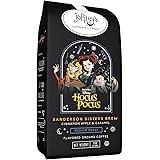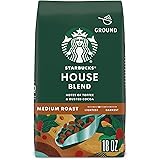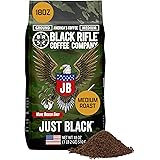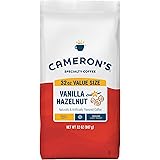Crafting Your Ideal Beginner Home Coffee Setup: Essential Insights for Brewing Success
Embarking on the journey of making coffee at home is an exciting endeavor. As explored in the accompanying video, the prospect of brewing your own perfect cup can seem daunting with the sheer volume of information available. However, a rewarding home coffee setup can be achieved without excessive spending or overwhelming technicalities. This guide expands on the video’s core principles, offering a clearer path to cultivating a delightful coffee routine right in your kitchen.
Many individuals are drawn to home brewing to save money, establish a new morning ritual, or simply to indulge in a fun, enriching hobby. The beauty of this pursuit is found in its simplicity and the tangible satisfaction of creating something delicious from scratch. The focus here is on empowering you with practical knowledge, steering clear of unnecessary complexities and directing you toward equipment that genuinely elevates your coffee experience.
The Foundation of Flavor: A High-Quality Burr Grinder
It is widely understood that the quality of your ground coffee is paramount. As highlighted in the video, a high-quality burr grinder serves as the cornerstone of any commendable home coffee setup. This sentiment is often encapsulated by the adage: “the output of your coffee will only be as good as what it’s going into.” Inferior grinding equipment, such as those inexpensive blade grinders commonly found, are known to produce an inconsistent particle size, which can lead to uneven extraction and a less flavorful, sometimes bitter, cup.
Burr grinders, in contrast, are designed to mill coffee beans between two abrasive surfaces, ensuring a uniform grind. This precision is critical because the surface area of the coffee particles dictates how quickly and evenly water extracts flavor compounds. Imagine trying to bake cookies with some flour finely powdered and some still whole kernels; the result would be inconsistent and undesirable. Similarly, inconsistent coffee grounds mean some particles are over-extracted while others are under-extracted, leading to a muddled taste profile.
Choosing Your Burr Grinder: Budget and Versatility
When selecting a burr grinder, two primary considerations often arise: the desired versatility and the allocated budget. Some grinders are engineered to handle a broad spectrum of grind sizes, suitable for everything from fine espresso to coarse cold brew. These “does-it-all” machines, such as the Mahlkonig E64, Niche Zero, or Eureka Oro Mignon, are generally positioned at the higher end of the market due to their advanced engineering and robust build quality.
However, recent years have seen an impressive surge of quality grinders becoming available at more accessible price points. Models like the Baratza ESP, Fellow Opus, and the Turin SD40 are celebrated for offering respectable grind performance for under $300, with some even falling below the $200 mark. These options allow for a good range of brew methods, making them excellent contenders for a beginner home coffee setup without a prohibitive investment.
Alternatively, a “middle-of-the-road” grinder might be preferred, especially if espresso is not an immediate priority. The Baratza Encore, for instance, is a long-standing recommendation known for its reliability and decent range for methods like pour over, French press, and drip coffee. While it may not excel at the extremely fine grind necessary for espresso, its consistent performance for other popular methods makes it a solid choice for many.
Hand Grinders: Portability and Value
For those who value portability or seek a quality grinder on a tighter budget, hand grinders present an appealing alternative. These manual devices are praised for their ability to deliver excellent grind quality, often rivaling electric counterparts, at a significantly lower cost—typically ranging from $80 to $150. Models such as the Timemore C2, KINgrinder K2, or the 1ZPRESSO JX and JX-Pro are frequently recommended for their build quality and consistent performance.
Hand grinders are particularly advantageous for travelers or those with limited counter space. The physical act of grinding beans by hand can also become a contemplative part of the morning ritual, adding another layer of enjoyment to the coffee-making process. While the effort required for grinding by hand is certainly more considerable than with an electric model, the control and precision offered are often seen as a worthwhile trade-off.
Selecting Your Coffee Brewer: Simplicity in Brewing
Once an appropriate grinder has been chosen, the next logical step is to select a coffee brewer that aligns with your desired brewing style and ease of use. The choice of brewer is intrinsically linked to the grind size capabilities of your chosen grinder. For instance, a French press typically demands a coarser grind, whereas a pour over method requires a medium-fine consistency. The video focuses on keeping things straightforward, suggesting brewers that minimize the technical skill needed while still producing excellent coffee.
While many commonly recommend the V60 or a traditional French press for a beginner home coffee setup, these methods can sometimes require a certain level of technique to master, especially concerning pour patterns and timing. In contrast, the Gem Dripper and the Clever Dripper are highlighted as excellent alternatives that offer comparable coffee quality in terms of acidity, body, and sweetness, but with significantly less complexity in their operation.
With the Gem Dripper, the brewing process is streamlined to simply pouring water down the center of the lid, making consistent results more attainable for beginners. The Clever Dripper, on the other hand, functions much like a hybrid between a pour over and a French press, allowing the coffee to steep fully before being released. This immersion method inherently reduces variability, as the water-to-coffee contact time is easily controlled, requiring less attention to intricate pouring techniques.
Beyond these, other popular brewers that offer varying levels of simplicity and control include the AeroPress, known for its versatility and durability; the Moka Pot, which brews a strong, espresso-like coffee; and various auto-drip machines, which offer maximum convenience. Each method presents its own unique flavor profile and brewing ritual, inviting exploration as your confidence in home brewing grows.
Enhancing Your Experience: Optional Accessories
While a quality grinder and a suitable brewer are the foundational elements of a great home coffee setup, certain accessories can significantly enhance precision and consistency. These items are not strictly necessary to begin with, but they can prove invaluable as you delve deeper into the nuances of coffee brewing.
The Coffee Scale: Precision for Perfection
A coffee scale is often equated to the measuring cups and spoons used in baking; while one might attempt to eyeball ingredients, replicating a consistently excellent result without precise measurements is nearly impossible. For coffee, using a scale allows you to accurately measure your coffee beans and water, ensuring the correct coffee-to-water ratio every time. This precision is fundamental to achieving consistent flavor. Imagine if your favorite baker simply guessed at the amount of sugar or flour for their renowned chocolate chip cookies; the outcome would vary wildly from batch to batch.
While high-end scales like those from Acaia or Brewista offer advanced features and rapid response times, many affordable options are available on Amazon that provide sufficient accuracy for home brewing. A simple kitchen scale that measures to 0.1 gram increments is often more than adequate for a beginner home coffee setup, allowing you to fine-tune your recipes and consistently reproduce your most enjoyed brews.
The Gooseneck Kettle: Controlled Pouring
A gooseneck kettle, characterized by its long, slender spout, is primarily designed to facilitate a more consistent and accurate pour. This control is especially beneficial for pour-over methods like the V60 or Kalita Wave, where a precise and even saturation of the coffee grounds is crucial for optimal extraction. The ability to direct the flow of water precisely helps to prevent channeling and ensures that all the coffee grounds are evenly exposed to the hot water.
However, it is important to note that a gooseneck kettle is not essential for all brewing methods. Brewers such as the Clever Dripper, AeroPress, French press, or Moka Pot do not require such fine control over the pour, as the coffee is steeped or brewed through immersion or pressure. For these methods, a standard electric kettle is perfectly sufficient. If you are not primarily focused on intricate pour-over techniques, this accessory can easily be deferred or a basic, inexpensive model can be acquired later on.
The Ultimate Secret to Exceptional Home Brewing: Embracing Simplicity
Perhaps the most profound secret to a truly enjoyable home coffee setup, as subtly revealed, is not a piece of expensive equipment or a complex technique, but rather a philosophy of “ignorance” – or more accurately, simplicity. When first starting out, it can be easy to become overwhelmed by the vast array of gear, brewing methods, and expert opinions. However, there is immense beauty and satisfaction to be found in keeping things straightforward.
Many individuals, upon discovering their passion for specialty coffee, find that their initial foray involved minimal equipment and a consistent, uncomplicated approach. The joy in those early days often stemmed from the simple act of brewing and savoring a good cup, rather than striving for theoretical perfection. It is often observed that as knowledge accumulates, there is a tendency to overcomplicate aspects of life that are inherently meant to be simple and beautiful.
Making coffee at home should ultimately be a moment of tranquility, an escape from the day’s demands where you can slow down and enjoy the ritual. Before investing heavily in an extensive home coffee setup, the most impactful first step is to focus on the coffee itself: buy good quality beans. Seek out specialty coffee roasters near you or explore reputable online subscriptions. Purchasing freshly roasted beans, perhaps even having them ground at the shop initially, allows you to experience the true potential of quality coffee without the immediate pressure of perfecting your grind or brew method.
By starting with excellent beans and a simplified approach, you are not only setting yourself up for delicious coffee but also supporting local businesses and embracing the fundamental pleasure of the craft. The most satisfying cup of coffee is often the one you made yourself, enjoyed in a moment of unadulterated simplicity.







